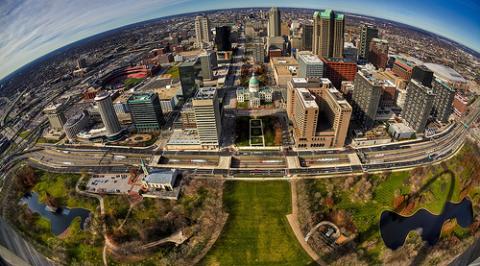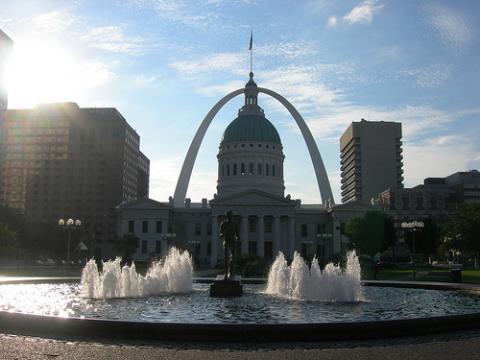Updated March 2018
Founded in 1764 by French fur traders who named the city after King Louis IX, St. Louis became part of the United States in 1803 following the Louisiana Purchase. As a major port on the Mississippi River, the city experienced significant growth during the 19th and early 20th centuries, reaching its peak of nearly 857,000 residents in 1950.
Like other industrial cities, in the mid-20th century St. Louis experienced significant population loss as a result of suburbanization and deindustrialization. As an independent city, St. Louis felt the effects of these trends more severely than other municipalities that could annex surrounding areas to boost tax revenues.
With an estimated 2016 population of 311,404 residents, St. Louis has lost the highest percentage of residents since 1950 (63 percent) than any other U.S. city. While the city continues to experience population loss, the rate of residents leaving over the past decade was not as severe as over previous ones (8 percent vs. 13-27 percent). Today, the city is 47 percent black, 44 percent white, 4 percent Hispanic, and 3 percent Asian.
The rate of poverty in St. Louis is well above that of bordering St. Louis County (25 percent vs. 10 percent) due in part to the relative inability of poorer residents to move away. St. Louis’ black residents fare even worse, with well over a third (38 percent) living at or below the poverty line (compared to 15 percent of the city’s white residents). Unemployment in St. Louis is also above the County average (14 percent vs. 9 percent), and again, St. Louis’ black residents are disproportionally affected, with more than a quarter (26 percent) facing unemployment compared to just 6 percent of the city’s white residents.
Working to address these challenges are a range of community wealth building organizations and initiatives. For example, Beyond Housing’s 24:1 Initiative is a place-based, resident-led effort focused on the 24 municipalities in the Normandy Schools Collaborative area. The Initiative includes an IDA program that has helped more than 1,000 families save over $1 million, and a community land trust, which has spurred over $100 million in economic development, including new homes, a bank, a grocery store, and a cinema. Also particularly notable is the nonprofit Rise, which, in collaboration with a range of nonprofit, financial, and governmental organizations, has developed more than 4,000 homes and 60,000 square feet of commercial space, and has provided $2.7 million in grants to boost the capacity of 20 community development organizations.
To help ensure all St. Louis residents can access healthy, fresh food, Urban Harvest STL grows food at several urban gardens and rooftop farms, and partners with St. Louis MetroMarket, a “farmers market on wheels.” Also in the food sector, City Greens Market (located in Southeast St. Louis) is a small nonprofit grocery that sells all items at cost to its members, who can pay an annual membership fee based on household income or join for free in exchange for volunteering at least an hour per week.
An overview of these and other exemplary community wealth building efforts follows:

